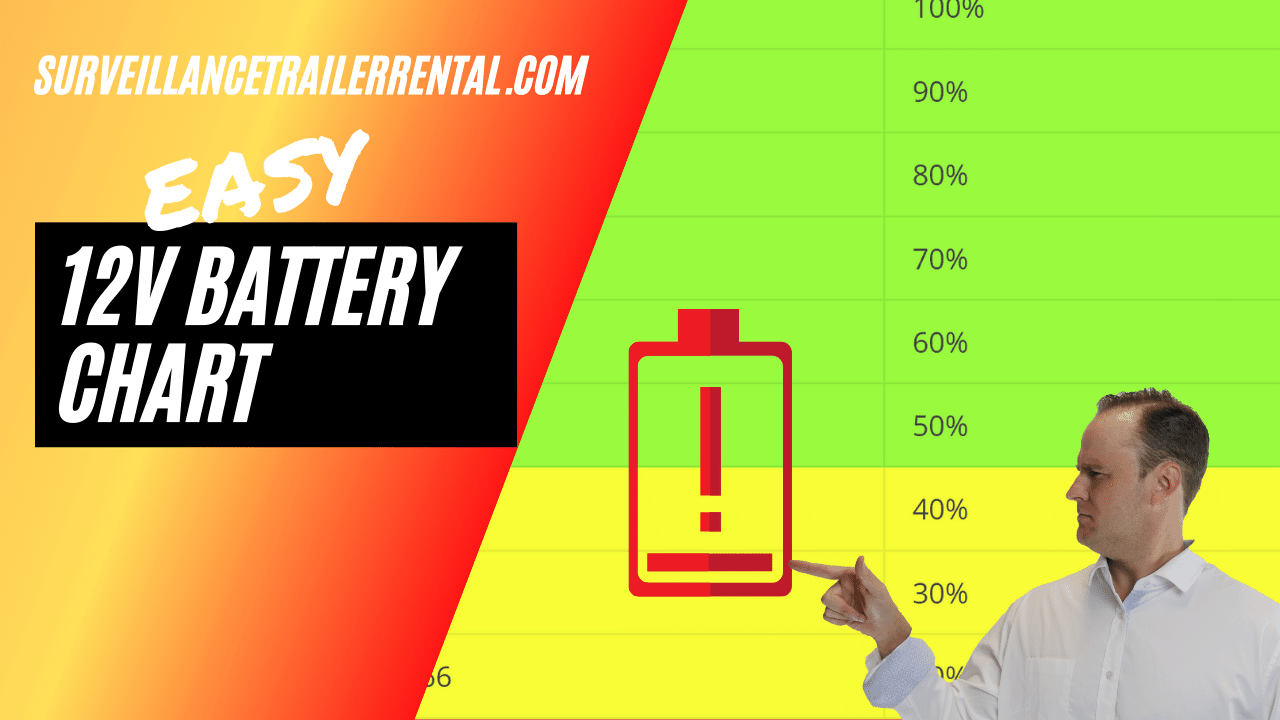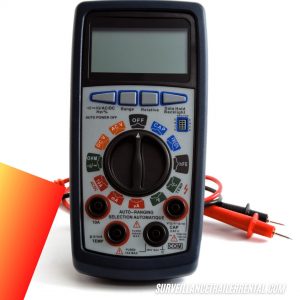12V Battery Voltage Chart: Easy to Read

| Battery Voltage | State of Charge |
|---|---|
| 12.73+ | 100% |
| 12.62 | 90% |
| 12.50 | 80% |
| 12.37 | 70% |
| 12.24 | 60% |
| 12.10 | 50% |
| 11.96 | 40% |
| 11.81 | 30% |
| 11.66 | 20% |
| 11.51 | 10% |
Preventing your battery from being discharged too much is critical to prolonging its life and this 12V battery voltage chart will help you make sense of the State of Charge (SOC). SOC is commonly used to understand how much energy a battery has left. By having a good measurement of the SOC, you know what you have left and if you need to implement a change. Using the chart above, you can get an idea of what the State of Charge is according to the voltage.[mks_pullquote align=”right” width=”300″ size=”24″ bg_color=”#000000″ txt_color=”#ffffff”]It’s important to note that the safe voltage level thresholds for charging and discharging depends on the type of 12V battery and its chemistry.[/mks_pullquote]
What’s the Difference Between SLA and LiFePo4?
Sealed Lead Acid (SLA)
If you discharge a typical SLA battery more than 50% of its max capacity, it will negatively impact its lifetime. Since you can’t use 100% of its capacity without risking damage, it means a 100Ah SLA battery is really only worth 50Ah of actually use per charge.
Lithium Iron Phosphate (LiFePo4)
Lithium Iron Phosphate batteries allow you to use more of the stored energy without risking damage and shortening the lifetime. It’s common to see LiFePo4 batteries getting 3000 cycles at 100% discharge and 4000 cycles at 80% discharge. That means the battery can be discharge 80% of its energy without a big impact on its overall lifespan. It means a 100Ah LiFePo4 battery can give you an energy return that’s closer to the 100Ah rating vs the SLA’s 50Ah of “safe” use.
How Do You Measure The State of Charge?
[mks_col] [mks_one_half]
There are a few ways in which you can understand the SOC. You can:
– Track the flow of the unit with a shunt and the relevant metering circuit.
– Use a hydrometer to measure the chemistry
– Use a voltmeter to measure the voltage (approximation)
[/mks_one_half] [mks_one_half]

[/mks_one_half] [/mks_col]
When measuring, to get the best results, make sure that the circuit is at rest or resting. Do not carry out these tests if the battery-pack is charging or under load. Ideally, you should leave the unit in a resting state for an hour before carrying out your measurements. If the circuit you are reading is connected to solar panels, make sure that you take the reading when the sun isn’t hitting them; otherwise, the unit will be charging, and the reading will not be accurate.
Follow The 12V Battery Voltage Chart
A fully charged 12V battery or battery-pack will read 12.7V or above; once that reaches 12V or below, that power unit is considered dead.
Ideally, you should never let your power source reach below 50% SOC, meaning that you should keep it at 12.1V or higher, looking at the chart above. This is the ideal SOC to charge the battery and maintain it to ensure that you get the most life from the unit itself.
Using a charge controller or appropriate battery charger will help maintain your battery’s lifespan by keeping it from discharging below the recommended thresholds or overcharging.
What if you are trying to start your car, but the State of Charge is sitting at 11.9V?
You will not be able to get it started as the battery is in a state of discharge. To make the most out of the battery, you need to keep the discharge to a maximum depth of 50%. While dipping into the yellow (above 40% or more than 11.96V as per the graph) occasionally isn’t too bad, continually doing so will shorten the lifespan. In layman’s terms, the less you discharge before recharging, the longer that it will last.
It is important to note that measuring the battery’s voltage will not give you an exact figure on the SOC, but it is undoubtedly an excellent way to gain an approximation. Should you need to be more accurate, you can measure the gravity of the cells in the battery, but this can be rather difficult to do, sometimes impossible depending on the type.
Before charging the battery, be sure to read the recommendations provided by the manufacturer to get the optimal charging voltage and maximize the life of the battery.



